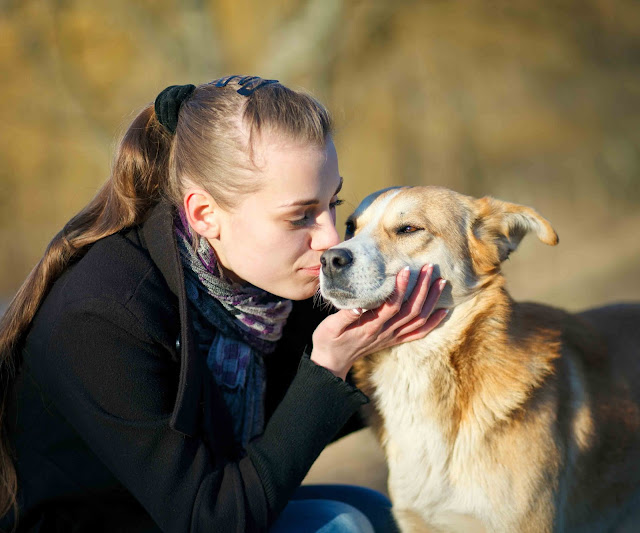Written by
Australian Dog Lover
13:05:00
-
0
Comments
Positive Reinforcement Training Techniques For Your Dog or "When Close Enough Isn’t Good Enough"...
Our goal whenever we are teaching anything to our puppy is to do it POSITIVELY! It’s up to us, as the puppy’s leader, to teach it how to become the dog that we want.
Old School methods of crashing and banging the puppy through behaviours may have been tolerated in the past, however we now understand they decrease the puppy’s drive and motivation to learn. Not to mention the potential damage to our relationship with the puppy.
All the behaviours we want to nurture and enhance in our puppy can be simply prompted with a lure and rewarded with food, affection or play. But what happens when the value of that Food, Affection or Play is less then the value the dog perceives in doing something else?
We advocate and promote active engagement with your puppy. We want our puppy to see us as the Sun, Moon and Stars. Always looking to us for leadership and guidance! Always wanting something that we have!
We love to teach our puppies lots of different things. Some of them are cute tricks that are just fun to do. Others are obedience-based commands that might some day save our puppies life. So how can our puppy tell the difference between these? Well, THEY CAN’T!
Before we can discuss how to handle a situation where your puppy isn’t doing what you ask of it, we need to all get on the same page and explain how you know for sure that your puppy knows what you want.
#1. Teaching Phase
Whenever we are teaching something new, we start in a distraction free environment. There is nothing of interest but us and we will have the puppy’s full attention.
All the behaviours we want to nurture and enhance in our puppy can be simply prompted with a lure and rewarded with food, affection or play. But what happens when the value of that Food, Affection or Play is less then the value the dog perceives in doing something else?
We advocate and promote active engagement with your puppy. We want our puppy to see us as the Sun, Moon and Stars. Always looking to us for leadership and guidance! Always wanting something that we have!
We love to teach our puppies lots of different things. Some of them are cute tricks that are just fun to do. Others are obedience-based commands that might some day save our puppies life. So how can our puppy tell the difference between these? Well, THEY CAN’T!
Before we can discuss how to handle a situation where your puppy isn’t doing what you ask of it, we need to all get on the same page and explain how you know for sure that your puppy knows what you want.
#1. Teaching Phase
Whenever we are teaching something new, we start in a distraction free environment. There is nothing of interest but us and we will have the puppy’s full attention.
#2. Introducing a Distractions Phase
When we have the puppy going through the motions of whatever behaviour we are teaching in a distraction free environment we slowly start to introduce distractions. A distraction could simply be having another person nearby and then build up to being right amongst an environment so busy that the dog has to really focus to stay engaged with us.
#3. Proofing Phase
This is where we test the puppy. We must be 100% sure the puppy knows what is being asked of it. We must have put the puppy in a similar situation with similar distractions and have had success. We ask the puppy to complete the behaviour and if it doesn’t then and only then do we compel it to comply.
So, what behaviours do we proof and what do we not? The answer is ALL OF THEM! All behaviours can be proofed with very simple techniques, causing almost no stress to the puppy.
So why is all this relevant?
Imagine a scenario where a pet dog owner is in the park with a group of friends. In front of their friends they ask the dog to sit, but it doesn’t.
Normally, through embarrassment or to avoid an uncomfortable situation everyone laughs it off and the dog continues to play. You may hear an excuse like “oh it’s because I don’t have food with me” or “he’s tired, that’s why.” The people go back to talking and the dog continues playing and everyone puts the situation behind them.
Everyone but the dog!
The dog has just learned that he can choose not to listen to his leader. And not just when the leader says to sit. But when the leader says anything!
So what went wrong? Does the dog not know how to sit on command? Or did he choose to ignore his leader. Either way it’s the human’s fault. And that human may just have put his dog’s life in danger.
When we are training a dog, or living with a dog we consider fully trained, CLOSE ENOUGH IS NOT GOOD ENOUGH. If you are going to ask your dog to do something for you, you must be in a position to reward it for that behavior and be prepared to take control of the situation and guide the dog into that behavior if need be.
So how do we keep our dog safe WHILE avoiding embarrassment? I’ll tell you.
1. Put the work in and concentrate on training those key behaviours that are going to keep your dog safe.
a. RECALL
b. HEEL
| A dog heeling properly matches his owner's pace |
c. DOWN AT A DISTANCE
2. Don’t bite off more than you can chew. If you haven’t proofed a behaviour then look around, assess the level of distraction you are working under and make an informed decision on whether you should even give that command.
3. Follow through. If you do end up in a situation where your dog ignores you then you need to correct it and carry out the necessary retraining right there and then.
Remember our goal is always to develop a bond so strong with our dog that their engagement and focus on us will make any distraction fade off into the background, but if you are not there yet, be careful. Close enough is not good enough.
written by Pat Stuart from The Canine Paradigm, November 2015 for Australian Dog Lover (all rights reserved).










No comments
Post a Comment